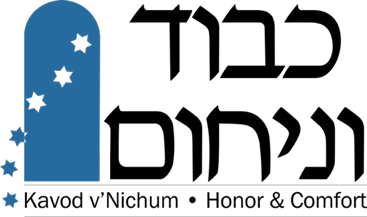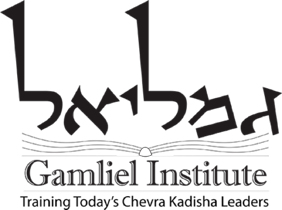Taharah Safety Recommendations from Kavod v’Nichum
Updated March 18, 2022
New: Recommendations as of March 18th, 2022
After two years, we can definitively say that the Coronavirus is still with us. We can also say that we know much more now about how Covid-19 is spread, and how we can significantly reduce the danger of disease acquisition by taharah teams working in funeral homes. Our recommendations are driven by recognizing that the biggest danger to team members of Covid-19 infection is from team members who are breathing in the same enclosed space.
Medical experts have been providing guidance to many Chevrot Kadisha, including the Community Hevra Kadisha of Greater Boston and New Community Chevra Kadisha in Pittsburgh. Our recommendations below are drawn in part from guidance that they have shared with us.
We suggest that every Chevrah Kadisha that performs in person taharah make their best efforts to form a safety team to augment and/or modify these recommendations based on conditions in their community and as CDC and OSHA standards change.
We’ve divided the Kavod v’Nichum recommendations into three parts – what we recommend for individual members of the taharah team, what we recommend for the team as it performs the taharah, and what we recommend for the funeral home facility where you do taharot. If you have questions or concerns about implementing any of these recommendations, please reach out to: info@jewish-funerals.org
Individual Member Recommendations
We continue to recommend that every Chevrah member study the important publication – Health and Safety Precautions for Taharah – Revised Second Edition.
Individuals should be vaccinated to the fullest extent possible. Previously we specifically recommended Hepatitis B vaccinations. Vaccinations for influenza, measles/mumps/rubella, chicken pox, hepatitis A and B and even shingles are important. We now add to that our strongest recommendation that all taharah team members have Covid-19 vaccinations with boosters.
Team members with a known exposure to Covid 19 within the past week should not participate in person. If possible, when called, team members should take a Covid-19 rapid test, and if the test shows a positive result for infection, they should not participate in the taharah.
Team members should mask, from the time they gather until the time they separate, preferably with an N-95 respirator or KN-95 mask. Getting a good fit for your mask (especially if you have a beard) can be challenging. See OSHA and CDC guidelines for more information. In addition to respiratory protection, team members should wear full PPE and follow CDC Standard Precautions. PPE should include eye covering (face shield or goggles), gown, and gloves. Team members should be trained in how to properly put on (don) and take off (doff) protective equipment.
Immunocompromised and unvaccinated members of the Chevrah Kadisha who wish to participate should be given tasks that do not require them to be in contact with other team members in the funeral home. This may include being a “Zoom reader” or handling taharah team logistics.
Taharah Team Recommendations
We recommend accurate tracking of participants who are on in-person taharah teams for possible future contact tracing.
We suggest considering a blended taharah model to minimize the number of team members present in the taharah room, where some portion of the team is in person, but the reader is present online and not physically present in the taharah room. In addition, we suggest that if any talking, singing, or chanting by team members is done in the room, that it be done quietly to minimize aerosolization. Alternatively consider a recording of singing or have the singer on Zoom or on speaker phone.
Recommendations for the Funeral Home Facility Where You Do Taharot
We recommend that Chevrot Kadisha who perform taharot at funeral homes work with their funeral directors to assure best ventilation practices. Circulate the air by running the fan continuously (thermostat set to “ON” not “AUTO” position), and where available, supplement by opening a window or a door. Our experts suggest 6 air exchanges per hour or 20 CFM per person of clean air delivery – either outdoor air, or with highly filtered recirculated air using MERV 13 or better filters on re-circulation systems.
Recommendations as of March 24th, 2020
The Coronavirus Pandemic is getting worse. Across the countries, we are seeing more instruction on appropriate responses.
We also recognize that everything we do has risk and benefits. Despite the many unknowns, these recommendations will attempt to balance between the benefit for the community and the protection of our taharah teams.
Let’s be clear about what the situations are where teams might be at risk. We consider for the purposes of this memo the word “taharah” to mean a group of team members assembling at a funeral home for the purpose of preparing a body for burial, including but not limited to the following actions:
- Team members dressing in PPE (personal protective equipment)
- Washing the body physically
- Pouring water to purify the body and soul spiritually
- Drying the body
- Dressing the body in tachrichim
- Casketing the body
- Or possible variations of the above, such as just placing a body bag into the aron and the tachrichim on top of the bag
Ironically, the greatest taharah risk today seems not to come from the meit/meitah, but from us. We must consider unexpected risks here and do what will be most effective in keeping teams safe.
Our experts in this field are concerned about:
- When we leave our homes go out to the funeral home to do a taharah, we break the social compact that asks that all unnecessary travel and gathering be eliminated.
- Spread of the virus is most dangerous among individuals, hence social distancing is in place. We are unable to protect the metaharim from each other in this way, before, during and after the taharah.
- Some taharah teams are not taking our PPE (personal protective equipment) recommendations seriously, or not having watchers (who make sure PPE is put on and taken off properly) or are not regularly practicing putting on and taking off PPE.
- PPE is currently in short supply in many areas and hence we are ethically asked to not use these for taharot, and to instead prioritize this important equipment for medical purposes.
These together lead us to believe that to do taharah at this time is actually an increase to the possibility of risk of viral exposure – the opposite of pikuach nefesh. It is recognized that we’ve lived and done taharot through other contagious disease outbreaks, and we continue to live with MRSA, Staph, C. diff, Hep B&C, and more. The current situation is different because we are not only concerned about transmission from the decedent but also from each other. This requires immediate action until this outbreak is under control.
Our panel of experts now strongly recommends that during these periods of widespread transmission of COVID-19, and especially when communities are told to limit personal exposure, Chevrah Kadisha groups should not do any form of taharot.
We realize that by making this recommendation, many questions are raised including when it will be OK and who will decide to resume doing taharot. We pledge to review these recommendations regularly and to communicate any changes needed.
Despite the above recommendation to not do taharot at this time, we understand that some groups may nevertheless choose to do taharot. For those people we add the following modifications to our March 8 recommendations:
- Taharah. Each team member should put on their PPE in a clean room and then enter the taharah room before the next person enters the clean room and puts on their PPE. Team members should leave the taharah room similarly doff PPE and exit one person at time.
- We suggest that Chevrah Kadisha groups should begin making their own PPE where possible, especially face masks and shields, for use by their taharah teams. Some instructions and patterns are here, as well as suggestions for cleaning and re-use. Here is an article about people using 3D printers to make face shields. (Please note that home-made masks do not filter out disease, they just contain sneezes and coughing, and help minimize spread of our own droplets.)
Recommendations as of March 8th, 2020
- Every Chevrah Kadisha should purchase, read and study the booklet published by Kavod V’nichum, titled Health and Safety Precautions for Taharah – A Guide to Understanding Potential Risk and Injuries While Performing the Holy Work of the Chevrah Kadisha – Revised Second Edition.
- Do not assume that you will know if the meit/meitah has coronavirus or any other disease. You might or might not have information, and that information might or might not be accurate. Do assume that every meit/meitah has some disease and therefore use Standard Precautions.
- Understand what we know about transmission of disease in the taharah room. Possible routes of disease spread are:
- Airborne and Aerosolized – no, the meit/meitah is not breathing
- Bloodborne – yes, blood and other body fluids may have the disease
- Contact – yes, the disease may be on the skin of the meit/meitah
- Droplet – yes, it is possible that if an object, like a scissors, falls into a pool of blood, that the disease could travel as infected droplets
- Protect against transmission in the taharah room by using Standard Precautions
- Wear gloves to protect our hands
- Practice the discipline of not touching our face so that the disease cannot enter our body through our mucous membranes – eyes, nose and mouth –
- Use Personal Protective Equipment or PPE that we discard before we leave the taharah room so that we don’t bring diseases home with us
- We suggest using face coverings, such as face shields,
- They can prevent splash droplets from touching your face
- They can reinforce the discipline of not touching your face during a taharah
- Review with your taharah team pages 11 and 12 in the Health and Safety booklet regarding PPE and taharah room discipline. Practice donning and doffing PPE.
- Establish policies for your Chevrah Kadisha that include:
- If taharah team members are sick, they should not do the taharah
- If taharah team members’ health is compromised, they should consider not doing the taharah.
- Discuss with your funeral home how they clean surfaces such as the taharah table. A 10% bleach solution has been shown to kill most diseases.
- Be aware that it is difficult to predict what will happen in the future, but be prepared for:
- Supply shortages of PPE
- Increased deaths and increased requests for taharot
- Decreased availability of funeral home staff due to sickness
- Decreased availability of taharah team members due to sickness
- Chevrah Kadisha members may want to have a role in helping their community by providing information and support, especially for vulnerable community members.
Donate to Fund Taharah Safety Educational Programs


